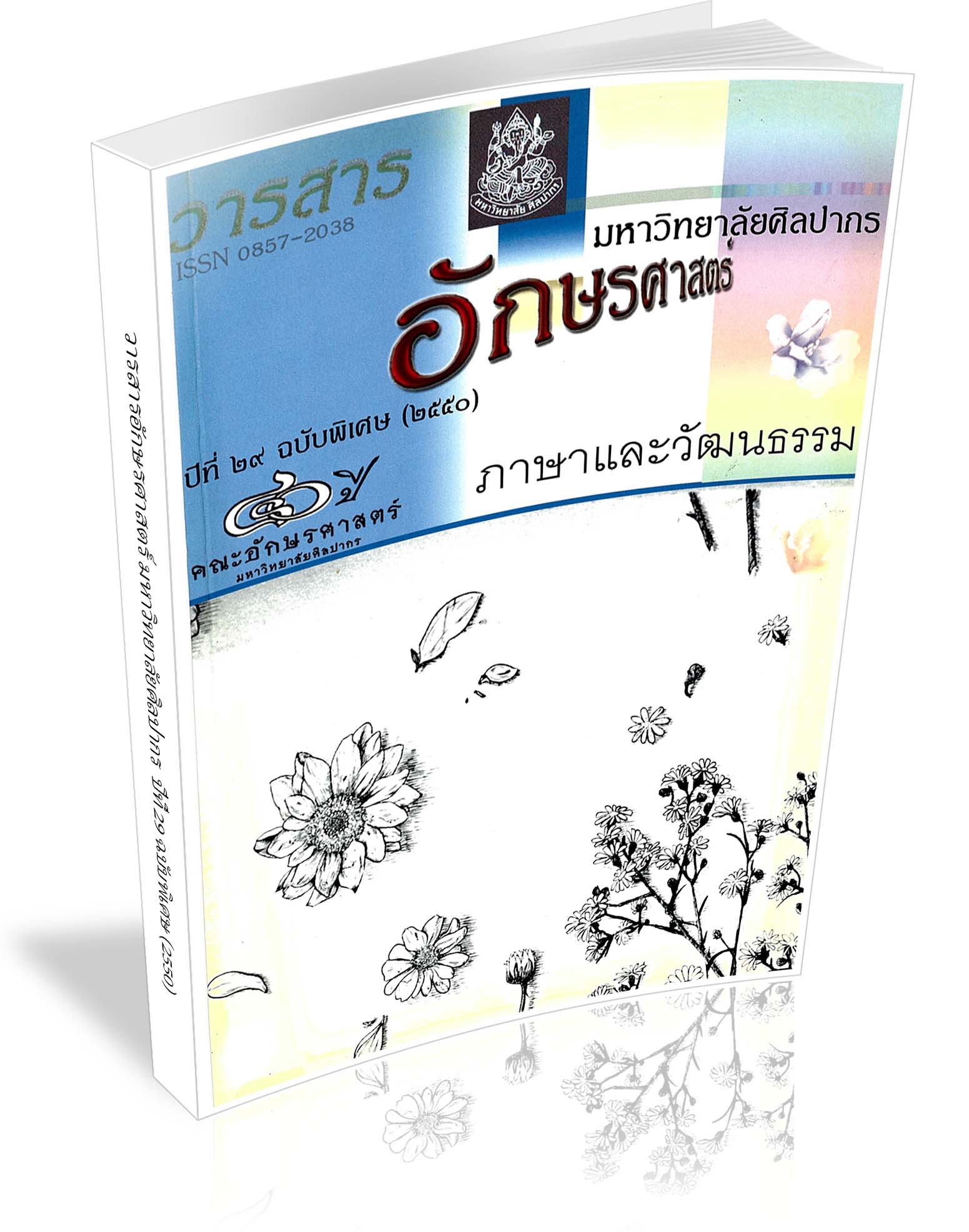From 'Isarn' Poem to 'lsarn Discourse': the Construction of the Meaning of Nature and Environment in Isarn Literature
Keywords:
กวีนิพนธ์, การประกอบสร้างความหมายของธรรมชาติและสิ่งแวดล้อม, ภาคอีสานAbstract
The poem 'Isarn' by 'Nai Pee' (Asanee Polchan) is one of the most acknowledged Thai literature in presenting the hardship of the people of the North East region (also known as Isarn region) and its vast infertile land to the wider world. Such image has been reproduced countless time in a score of Isarn related literatures in the later date. This article attempts to study and analyze the concept of nature and environment in ‘Nai Pee's poem based on ecocriticism, discourse, and social construction theory. The finding shows that the nature and environment presented in two of Nai Pee's poem - 'Isarn' and 'Isarn Lom' were imbalanced; while some of these nature were extraordinarily plentiful, the other were poor, scarce, and inhabitable. The poet masterfully presented the image through the use of symbolic language and signs. This reflects the social construction by which the nature dictates people way of life. Furthermore, the fact that the poet selectively presented the image of imbalance nature echos the influence of Marxist ideology. Nature in his poem was the primary cause of people's hardship, consequently led to exploitation by the corrupted elite-class politicians. It can be said that both of his poems have constructed the discourse of the North East region. or 'Isarn discourse' This discourse thus shapes the identity of the North East region and portrays it as 'the land of hardship and famine.' Since then, this discourse has been reproduced in the more modern Isarn literature works. When carefully considered, the concept of nature and environment which underlies 'Isarn discourse' was ecocentrism. It places emphasis on the greatness of nature and stresses that nature is far beyond human control. Nevertheless, due to the fact that these were for life's sake poems, the poet might have seen the nature as a mechanism which potentially influences people's way of life similar to other social mechanisms.
Downloads
References
ทีปกร. ศิลปะเพื่อชีวิตศิลปะเพื่อประชาชน (พิมพ์ครั้งที่ ๔). กรุงเทพฯ: โดมทักษิณ. ๒๕๑๗.
“ลาวคําหอม”. ฟ้าบ่กั้น. (พิมพ์ครั้งที่ ๓) กรุงเทพฯ : สํานักพิมพ์ดวงกมล. ๒๕๒๒.
Bate, Jonathan. Frome 'Red' to 'Green'. In Laurence Coupe (Ed). The Green Studies Reader From Romanticism To Ecocriticism. (p.169). New York: Routledge. 2002.
Buell, Lawrence. The Environmental Imagination : Thoreau,Nature Writing and The Formation of American Culture.Cambridge, MA : Havard University Press. 1995.
Campbell, Sueellen. “The Land and Language of Desire : Where Deep Ecology and Post-Structural Meet." In Glotfelty and Fromm (Eds). Ecocriticism Reader (p. 129). Athens : University of Georgia Press. 1996.
Downloads
Published
How to Cite
Issue
Section
License
ผู้เขียนบทความต้องยินยอมในข้อกำหนดต่าง ๆ ของวารสารก่อนส่งบทความตีพิมพ์




